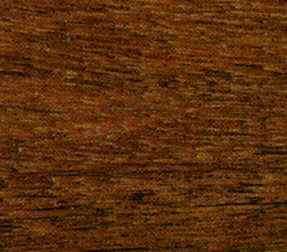
Resak (Vatica tonkinensis)
Family: Fagaceae
Common names: Chan thip, Lau tau, Mascalwood, Narig, Resak, Taungsagaing, Tralak
Distributed in: India, Indonesia, Malaysia, Sri Lanka, Vietnam (Oceania and S.E. Asia)
Distribution overview: Several species in the Vatica genus are reported to occur in the Malay Peninsula and the Philippines. In the Philippines, the species are distributed in the primary forests at low to medium elevations.
Common uses: Bedroom suites, Boat building, Building construction, Building materials, Cabin construction, Cabinetmaking, Canoes, Construction, Crossties, Domestic flooring, Drawer sides, Excelsior, Factory construction, Factory flooring, Flooring, Furniture , Heavy construction, Joinery, Kitchen cabinets, Lifeboats, Living-room suites, Mine timbers, Office furniture, Parquet flooring, Radio - stereo - TV cabinets, Railroad ties, Shipbuilding, Sub-flooring, Turnery
Product sources: Although the generic vernacular name of Vatica is Resak, the name has been used to refer to other species. Vatica timbers are very similar in characteristcs to those of Cotylelobium, and they are usually combined and marketed together under the trade name, Resak.
Environment profile: Status has not been officially assessed
Tree size: Trunk diameter is 150-200 cm
Colors: the heart isYellow, Yellowish brownand the sapwoodWhite, Yellow.The grain isStraight, the textureMediumand the lusterNon-lustrous
Natural durability: Susceptible to attack by marine borers and termites, Susceptible to insect attack
Odor: No specific smell or taste
Silica Content: Contains silica
Kiln Schedules:
US Kiln-drying schedule Table 501, Schedule Code (14-15) has been recommended for 4/4 stock
Kiln Drying Rate: Rapid
Drying Defects: End splitting, Internal Honeycombing Possible
Ease of Drying: Rapidly
Cutting Resistance: Easy to saw
Mortising: Very Good to Excellent
Moulding: Very Good to Excellent
Movement in Service: Very Good to Excellent
Nailing: Fairly Easy to Very Easy, Reported to be hard and dense
Planing: Fairly Easy to Very Easy
Resistance to Impregnation: Sapwood is resistant
Response to hand tools: Easy to Work
Routing recessing: Very Good to Excellent Results
Veneering qualities: Veneers easily, Veneers moderately easy
Turning: Poor to Very Poor Results
Polishing: Poor to Very Poor;
- Numerical data Metric
- Numerical data English
- Strength properties
- References
 |
 |
 |
 |
| Item |
Green |
Dry |
Metric |
| Specific Gravity |
|
|
|
| Density |
|
|
kg/m3 |
| Bending Strength |
780 |
1276 |
kg/cm2 |
| Crushing Strength |
394 |
664 |
kg/cm2 |
| Hardness |
|
689 |
kg |
| Impact Strength |
|
|
cm |
| Shearing Strength |
|
158 |
kg/cm2 |
| Stiffness |
132 |
159 |
1000 kg/cm2 |
| Tangential Shrinkage |
|
|
% |
| Radial Shrinkage |
|
|
% |
| Weight |
|
|
kg/m3 |
| Maximum Load |
|
|
cm-kg/cm3 |
| Toughness |
|
|
cm-kg |
| Static Bending |
|
|
kg/cm2 |
|
 |  |  |  | | Item | Green | Dry | English | | Bending Strength | 11106 | 18162 | psi | | Hardness | | 1519 | lbs | | Maximum Crushing Strength | 5606 | 9457 | psi | | Shearing Strength | | 2259 | psi | | Stiffness | 1882 | 2274 | 1000 psi | | Toughness | | 360 | inch-lbs | |
Compression strength (parallel to grain) = high
Bending strength (MOR) = high
Resists denting and marring
Boone, R.S., C.J. Kozlik, P.J. Bois, and E.M. Wengert. 1988.Dry Kiln Schedules for Commercial Woods - Temperate and Tropical.United States Department of Agriculture, Forest Service, General Technical Report FPL-GTR-57, Forest Products Laboratory, Madison, Wisconsin.Desch, H. E. 1957. Manual of Malayan Timbers - Volume I. Malayan Forest Records, No. 15. Malaysia Publishing House Ltd., Singapore.Keating, W.G., Bolza, E.,1982,Characteristics properties and uses of timbers. South East Asia, Northern,Australia and the Pacific,C.S.I.R.O. Div. Chemical Technology,Inkata Press,1Reyes, L.J. 1938. Philippine Woods. Department of Agriculture and Commerce, Technical Bulletin 7, Commonwealth of the Philippines, Bureau of Printing, Manila.
|








